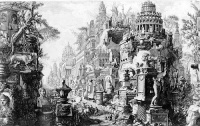Artifact (archaeology)
From The Art and Popular Culture Encyclopedia
|
Related e |
|
Featured: |
An artifact or artefact (from Latin phrase arte factum, from ars skill + facere to make) is, in archaeology, an object recovered by archaeological endeavor, which may have a cultural interest. However, modern archaeologists take care to distinguish material culture from ethnicity, which is often more complex, as expressed by Carol Kramer in the dictum "pots are not people".
Examples include stone tools, pottery vessels, metal objects such as weapons, and items of personal adornment such as buttons, jewelry and clothing. Bones that show signs of human modification are also examples. Natural objects, such as fire cracked rocks from a hearth or plant material used for food, are classified by archeologists as ecofacts rather than as artifacts.
See also
- Antiquities
- Archaeological ethics
- Art object
- Assemblage
- Biofact (biology)
- Dating methodology (archaeology)
- Excavation
- Geofact
- Harris matrix
- Seriation
- Small finds
- Furniture


